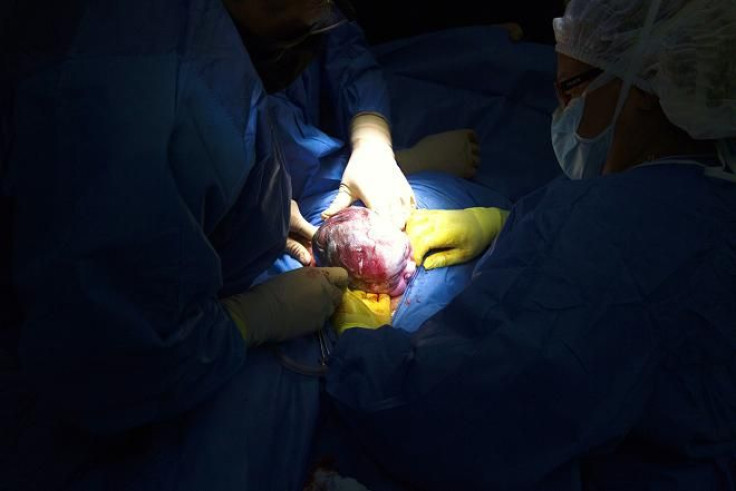Cesareans and Induced Labor Linked to Serious Infant Health Risks

New studies have shown that Cesarean sections and induced labor, which have long been assumed to be the best choice for babies that will be born preterm, may in fact put infants at a higher risk for serious health problems.
The studies, presented Thursday at the annual meeting of the Society for Maternal-Fetal Medicine, have shown that these two common birth practices, which were largely thought to be harmless and beneficial, could bring significant harm to babies.
The first study examined 2,560 premature infants of low birth weight and found that those delivered by C-section before 34 weeks of pregnancy were 30 percent more likely to develop respiratory distress syndrome, which can lead to a serious breathing disorder that can lead to organ damage, compared to babies delivered vaginally.
"Although in many instances, a C-section is medically necessary for the health of the baby or the mother, this research shows that in some cases the surgery may not be beneficial for some infants," Dr. Diane Ashton, deputy medical director of the March of Dimes who was not involved in the study said at the meeting.
Ashton noted that some of the valid reasons for delivering a baby via C-section would be if the baby is in distress or if the heart rate is dropping. She also said that the study did not include babies with complications such as birth defects, deliveries that required forceps or vacuum assistance, or deliveries of women with a past history of C-sections.
The other study found that immediately inducing labor after the rupture of membranes, or when the bad of water breaks, risked infections in babies compared to babies born to mothers who were assigned to close monitoring that extended pregnancy on average by 3.5 days.
The study also showed that the risk of infection in infants was similar in both groups of the 536 women with ruptured membranes that were either assigned to induction of labor or close monitoring as were rates of respiratory distress in the baby.
"Due to these findings, we suggested expectant management as opposed to induced labor when possible," the researchers said in a news release.
According to a HealthGrades report C-section deliveries increased from 2002 at 27 percent of births to 34 percent in 2009, and the U.S. Centers for Disease Control and Prevention recently reported a slight dip in cesarean rates to about 33 percent in 2010.
“I’m acutely aware as a clinician that the C-section rate is raising, and there were prior studies that really had mixed results,” Werner said. “Some suggested an increased risk of bleeding in the brain and some suggested increased risk of death in this population with a vaginal delivery. So I really wanted to look at a contemporary, diverse population.”
Ashton said that it is not too soon for these and other similar findings to influence current practice.
“Certainly there should be some review and maybe recommendations from the American Congress of Obstetricians and Gynecologists as to where they think practice should change,” Ashton said.
In 2011, the American College of Obstetricians and Gynecologists had issued new guidelines that aimed to lower the rate of repeated C-sections by making it easier for women to find physicians and hospitals that will allow them to attempt vaginal deliveries even when a previous baby was delivered by a caesarean section.
While women who have delivered via C-section are at a higher risk for uterine rupture that affect less than 1 percent of women, C-sections which involves major abdominal surgery carries many other health hazards both to mother and to the child.



























